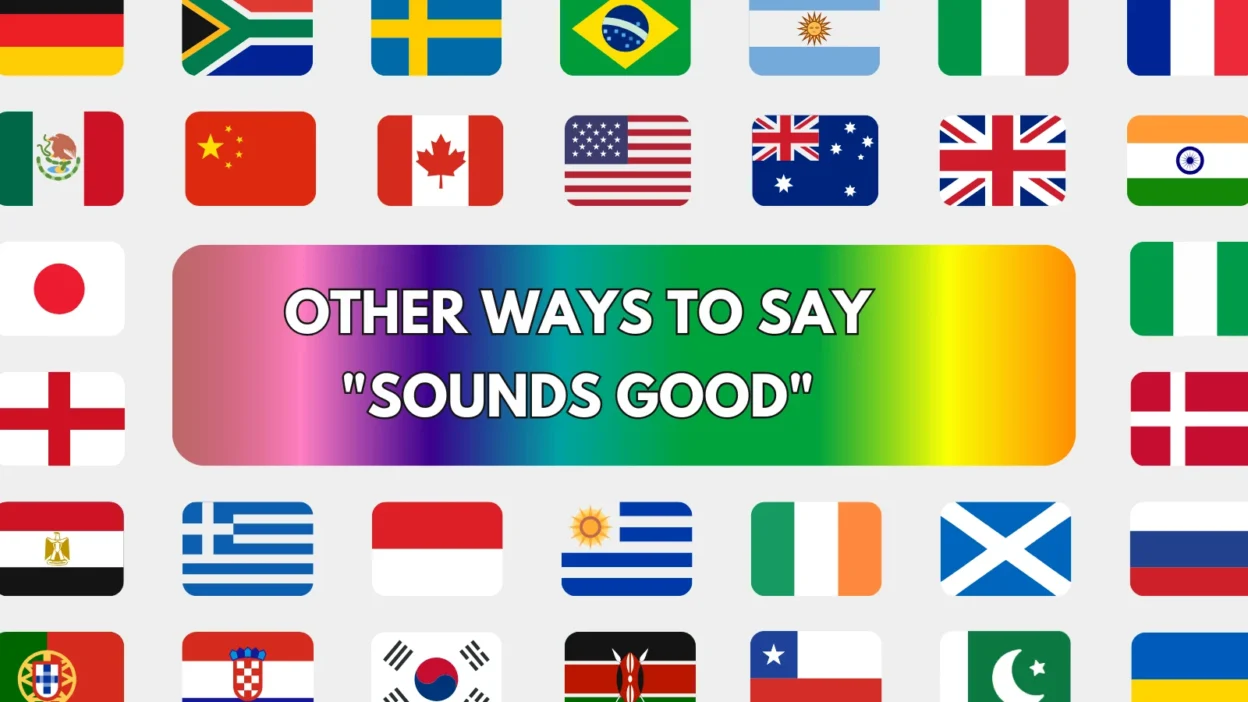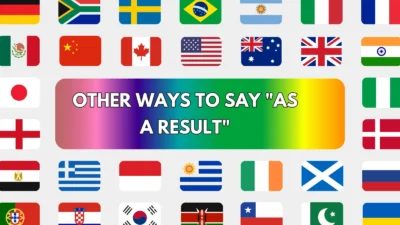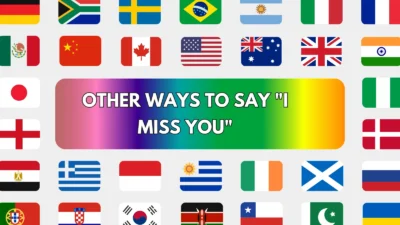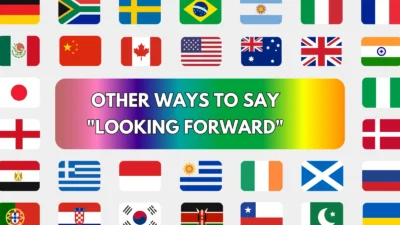The phrase “sounds good” is one of the most commonly used replies in everyday communication. It expresses agreement, approval, or understanding in a casual and friendly way. While it’s versatile, using it too often can make your responses feel repetitive or unoriginal — especially in professional or written contexts.
Luckily, there are plenty of other ways to say “sounds good” that let you adjust your tone, sound more polished, or add a bit of personality. In this article, you’ll find 25 thoughtful alternatives, each with its meaning, explanation, usage example, best context, and tone.
1. That Works for Me
Meaning:
Expresses agreement or that the plan is acceptable.
Detailed Explanation:
This is a casual yet clear way of saying you’re okay with something. It shows cooperation.
Scenario Example:
Let’s meet at 3 PM? — Sure, that works for me.
Best Use:
Casual chats, work emails, scheduling.
Tone:
Friendly, agreeable, laid-back.
2. Sounds Like a Plan
Meaning:
Agrees with a suggestion and confirms it’s a good idea.
Detailed Explanation:
A fun, upbeat way to say you’re on board with the proposed plan.
Scenario Example:
We’ll grab dinner after the movie. — Sounds like a plan!
Best Use:
Casual conversations, friendly replies.
Tone:
Positive, easygoing, enthusiastic.
3. Fine by Me
Meaning:
You’re okay with what was suggested.
Detailed Explanation:
Slightly more neutral, this phrase communicates that you have no objection.
Scenario Example:
Let’s skip the intro and jump in. — Fine by me.
Best Use:
Team chats, friendly or neutral conversations.
Tone:
Agreeable, relaxed, neutral.
4. I’m On Board
Meaning:
You fully agree and support the idea.
Detailed Explanation:
Often used in group settings or when showing commitment to a plan.
Scenario Example:
We’re launching the new strategy next week. — I’m on board.
Best Use:
Workplace meetings, collaborative projects.
Tone:
Supportive, proactive, professional.
5. That’s Perfect
Meaning:
Strong approval — it’s not just okay, it’s ideal.
Detailed Explanation:
A slightly more enthusiastic form of “sounds good,” expressing satisfaction.
Scenario Example:
I’ll send the report tomorrow morning. — That’s perfect!
Best Use:
Emails, confirming plans or timelines.
Tone:
Polite, positive, professional.
6. All Right
Meaning:
Expresses agreement or acceptance.
Detailed Explanation:
Short and casual, it’s a common way to acknowledge or agree.
Scenario Example:
We’ll meet outside the café. — All right!
Best Use:
Text messages, spoken replies.
Tone:
Informal, casual, neutral.
7. I’m Good With That
Meaning:
You’re okay with the suggestion or plan.
Detailed Explanation:
A relaxed way to show agreement or contentment with an option.
Scenario Example:
Let’s go with option two. — I’m good with that.
Best Use:
Casual or semi-professional discussions.
Tone:
Agreeable, chill, friendly.
8. Agreed
Meaning:
You’re in agreement with what was said.
Detailed Explanation:
Concise and formal — great for quick alignment in business contexts.
Scenario Example:
We’ll move forward with the proposal. — Agreed.
Best Use:
Workplace emails, decisions, formal chats.
Tone:
Concise, professional, respectful.
9. I’m In
Meaning:
You’re interested and committed.
Detailed Explanation:
Enthusiastic way to show participation or approval.
Scenario Example:
Game night at my place Friday? — I’m in!
Best Use:
Group invites, social settings.
Tone:
Excited, casual, confident.
10. That’s Fine
Meaning:
You accept the idea or plan.
Detailed Explanation:
Simple and neutral — shows you’re okay with something without too much enthusiasm.
Scenario Example:
Let’s push the deadline by a day. — That’s fine.
Best Use:
Emails, team chats.
Tone:
Neutral, calm, cooperative.
11.Sure Thing
Meaning:
A cheerful way to confirm or agree to a request.
Detailed Explanation:
Adds friendliness to your yes — very common in verbal conversations.
Scenario Example:
Can you email me the slides? — Sure thing!
Best Use:
Customer service, spoken replies.
Tone:
Warm, helpful, casual.
12. Absolutely
Meaning:
Strong, confident agreement.
Detailed Explanation:
Adds certainty and positivity to your reply.
Scenario Example:
Can we count on you for support? — Absolutely.
Best Use:
Professional replies, affirmations.
Tone:
Confident, firm, supportive.
13. Roger That
Meaning:
Indicates that you’ve heard and understood.
Detailed Explanation:
Borrowed from radio talk, this adds fun or formality in technical contexts.
Scenario Example:
Update the file by noon. — Roger that.
Best Use:
Military, IT, informal group chats.
Tone:
Playful, technical, casual.
14. Cool
Meaning:
Casual agreement or approval.
Detailed Explanation:
Very informal and common in friendly or youthful conversations.
Scenario Example:
We’re heading out at 7. — Cool.
Best Use:
Texts, friends, casual chats.
Tone:
Laid-back, trendy, informal.
15. Deal
Meaning:
Agrees to a suggestion like you’re making an agreement.
Detailed Explanation:
Short and snappy — makes the approval feel decisive.
Scenario Example:
You take the early shift, and I’ll close. — Deal.
Best Use:
Quick negotiations, informal agreements.
Tone:
Straightforward, energetic, casual.
16. Very Well
Meaning:
Formal way to express acceptance or agreement.
Detailed Explanation:
Used in traditional or official English — sounds respectful and polished.
Scenario Example:
We’ll reconvene at 2 PM. — Very well.
Best Use:
Formal speech, historical or literary writing.
Tone:
Polite, old-fashioned, respectful.
17.No Problem
Meaning:
You’re fine with the suggestion or request.
Detailed Explanation:
Also works as a polite response to thank you, but often means “that’s fine.”
Scenario Example:
Can we switch seats? — No problem.
Best Use:
Service, casual conversations.
Tone:
Friendly, chill, supportive.
18.I’m Okay With That
Meaning:
Expresses approval with a neutral or calm tone.
Detailed Explanation:
Shows you’re comfortable with the situation, even if you’re not enthusiastic.
Scenario Example:
Let’s keep the meeting short. — I’m okay with that.
Best Use:
Low-stakes discussions, polite replies.
Tone:
Mild, agreeable, calm.
19.Alrighty
Meaning:
A playful version of “alright.”
Detailed Explanation:
More cheerful and informal — adds fun to your confirmation.
Scenario Example:
We’ll leave in 10 minutes. — Alrighty!
Best Use:
Casual speech, lighthearted moments.
Tone:
Playful, informal, upbeat.
20.It’s a Go
Meaning:
Means the plan is approved and ready to proceed.
Detailed Explanation:
Adds a slightly technical or assertive tone, often used in project settings.
Scenario Example:
Budget’s approved — it’s a go.
Best Use:
Projects, action plans, updates.
Tone:
Assertive, confident, clear.
21.Okay Then
Meaning:
Casual confirmation or agreement.
Detailed Explanation:
Slightly reserved but polite, often used when wrapping up a decision.
Scenario Example:
Let’s take the earlier train. — Okay then.
Best Use:
Everyday talk, friendly discussions.
Tone:
Neutral, light, polite.
22.That’ll Do
Meaning:
Accepts something as good enough or sufficient.
Detailed Explanation:
Sometimes used when you’re satisfied, even if it’s not perfect.
Scenario Example:
This draft looks solid. — That’ll do.
Best Use:
Reviewing work, casual approvals.
Tone:
Practical, informal.
23.Fair Enough
Meaning:
Shows you accept someone’s point or suggestion.
Detailed Explanation:
Used when you understand and respect a decision or view, even if you weren’t convinced.
Scenario Example:
We’ll keep the current pricing model. — Fair enough.
Best Use:
Negotiations, discussions.
Tone:
Reasonable, balanced, mature.
24.Got It
Meaning:
You understand and agree to what was said.
Detailed Explanation:
A quick acknowledgment, shows both understanding and acceptance.
Scenario Example:
Don’t forget to send the invoice. — Got it.
Best Use:
Emails, task lists, verbal confirmations.
Tone:
Sharp, concise, practical.
25.Copy That
Meaning:
Acknowledges that you’ve received and understood a message.
Detailed Explanation:
Similar to “roger that,” often used in structured communication.
Scenario Example:
Update the report before noon. — Copy that.
Best Use:
Professional teams, technical work, quick responses.
Tone:
Efficient, crisp, technical.
Conclusion
“Sounds good” is a go-to phrase — but using the same response every time can dull your communication. With these 25 vibrant alternatives, you can switch up your tone, sound more confident, or add personality to every response.



